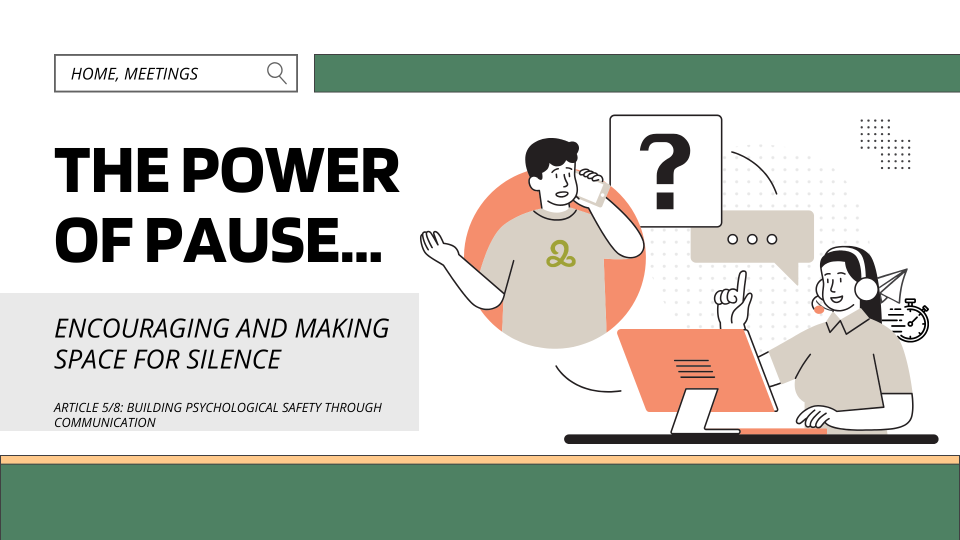There are no items in your cart
Add More
Add More
| Item Details | Price | ||
|---|---|---|---|

I still remember sitting at the dinner table as a child, wanting to share something that had happened in school. My classmates had started calling me “Maggi” because of my curly hair. It stung and I wanted to tell my family.
It’s not just me. A young manager once shared how she asked her team for ideas on a struggling project. The room went silent and in her moment of panic, she filled the silence with her own solutions. Everyone agreed and the meeting moved on. Weeks later, she found out a teammate had kept quiet about a terrific idea that might have saved time and money. But in that rushed moment, they found no room to speak anything.
Efficiency is easily confused with speed in most boardrooms. A question is posed and within seconds someone speaks up to fill the silence. The silence is rarely long enough for one to have a deeper meaning. For leaders, this is a missed opportunity.
But why does silence feel like a discomfort? Is it because of the lost time? Well, more than the lost time, the silence is uncomfortable because of its potential to what it may expose, its uncertainty, its ability to make someone vulnerable and many a times the fear of difference in opinion. But these are the very elements that build a foundation of stronger and more empowered decisions, only if we let them surface.
And that’s the point, what feels like dead air in the room is actually a doorway. One senior executive I worked with used silence as a strategic tool by introducing intentional pauses during critical discussions.
Inspired by this, I began announcing upfront how much time we would take just to think. It gave the pause a clear purpose, made it less awkward and created space for more thoughtful contributions. Over time, that practice became a signal for my team: thought matters more than speed. And with that signal came something deeper, where people felt their ideas were genuinely valued and not rushed. That sense of safety encouraged them to take risks, voice concerns and speak more openly.
Every leader has seen a meeting stall into awkward silence until someone jumps in with nervous humor, usually the kind no one laughs at, but everyone is grateful for. But that shortcut bypasses the moment’s potential. The leader who can normalize silence by waiting, holding eye contact and signaling patience can turn those gaps into catalysts for sharper thinking, braver voices and stronger decisions.This doesn’t intend longer meetings. It simply intends to hold smarter meetings. When leaders give space for thinking, their teams stop talking just to fill time and start sharing what really matters. In high-stakes discussions, those few extra seconds of silence can be the difference between going with the loudest majority and making a decision that is clear and sound.
For leaders, this is where silence pays dividends. When people see that their pause to think is respected, they feel safer to put forward bold ideas, own up to mistakes and even challenge assumptions. That’s the essence of psychological safety and this turns silence from an awkward gap into a driver of trust and innovation.
Today ability to deal and manage silence is no longer a soft skill. It is necessary to fuel innovation, prevent costly blind spots and strengthen retention to build workplaces where people trust that their voice matters.
Meaningful Silence at the top shapes silence across the organization. When leaders model pauses with comfort, they signal that reflection is not weakness but part of the process to generate wisdom. In that space, performance reviews stop feeling like transactions and turn into real conversations. Strategy discussions open up beyond the usual voices. Innovation sessions welcome ideas that would otherwise remain unsaid.
